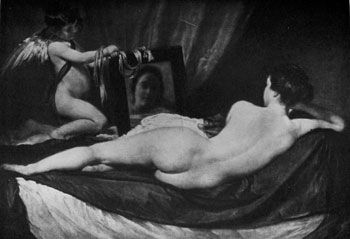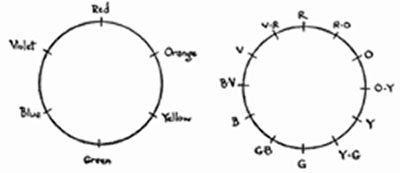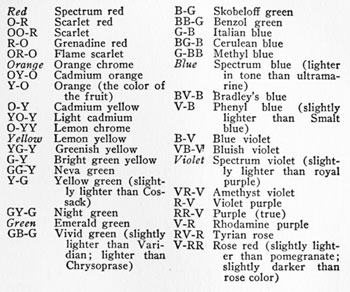The Study of Color in Interior Decorating
The study of color is made more difficult by the fact color phenomena are investigated and described in terms of colored light by the physicist, and in terms of pigments by the artist and color worker. The scientist, passing a ray of light through a spectroscope, finds that it is broken down into a flat band of color containing more than a thousand hues, with red at one end and violet at the other; that these hues stand in definite relationships to each other; and that they behave in certain ways when variously combined.
The artist, however, does not work with colored lights, but with pigments, which lack the power of complete absorption and therefore yield results different from those obtained when working with light. Since we are concerned in interior decoration almost exclusively with the pigment colors, and are in fact concerned primarily with color perception and only incidentally with color theory, it seems wiser in the brief study of color to be included in this volume to follow-with reservations-Chevreul and the older colorists. This method will afford the easiest and most simple approach to the subject, and the most helpful results in practice. The student who wants an accurate knowledge of the scientific theories of color can consult Rood, Von Bezold and Luckiesh.
There are three pig mental hues which cannot be produced by any admixture of other colors, but which are themselves capable of producing, in conjunction with black and whit, all other colors. These three colors, which for this reason are called the primaries, are red, yellow and blue. Being as unlike as possible, they may, for the sake of clearness in color study, be conceived as lying at the points of an equilateral triangle inscribed within the circumference of a circle, as in figure 7. Any two of the primaries can be mixed to form a third color which partakes equally of the qualities of its constituent primaries. Thus red and yellow yield orange, yellow and blue yield green, and blue and red yield violet. These resultant hues, which are called the secondaries, or binaries, will accordingly lie midway between the two primaries which unite to form them and directly opposite the third primary on the chromatic circle.
Instead of uniting any two of the primaries to form binaries, or colors partaking equally of the qualities of their component, we can of course unite them in different proportions to form other hues partaking unequally of these qualities. Thus red can be made

PLATE V.-Velasquez: The Rokeby Venus. Note the repose of horizontal lines; the grace, softness and buoyancy of curved lines; the subtle beauty of curves repeated, opposed and balanced; the contrast introduced by the rectangular frame; and the manner in which this contrast is softened by the curved ribbons, the reflected face, and the fact that the mirror, like the body of Cupid, is perpendicular to the body line of the Venus.
Dominant in a mixture of red and yellow in a degree that will produce red-orange, a color sharing equally the qualities of red and of orange, and therefore properly lying midway between those colors on the chromatic circle. Similarly, yellow may be made dominant in a degree to form yellow-orange, lying midway between orange and yellow. This process can be continued indefinitely, since it is manifest that any two

FIGURE 7.-The three primaries, red, yellow and blue, and the binaries, orange, green and violet; the chromatic circle, showing a sequence of twelve hues.
primaries can be united in any proportions whatever, thus obtaining in theory an infinity of hues differing by infinitesimal gradations. Most of these hues have not been standardized or named. Chevreul, the pioneer in color theory, divided the chromatic circle into seventy-two parts. Ridgeway, whose Color Standards and Nomenclature is an extraordinarily painstaking and most valuable work, makes a division of the spectrum hues-including those hues between violet and red, which do not appear in the solar spectrum-into thirty-six colors, which are here given in their order from red through orange, yellow, green, blue, violet and back to red. The letters R, O-R, OO-R, and so on, indicate the proper positions of the hues in the circle, as well as the relative proportions of the two components in each hue. The names are those employed by the author.

 "Finally! Step-by-Step Guidebooks Show
"Finally! Step-by-Step Guidebooks Show